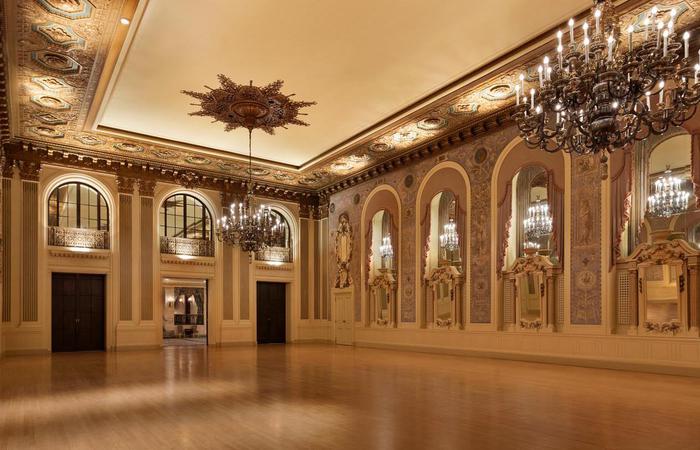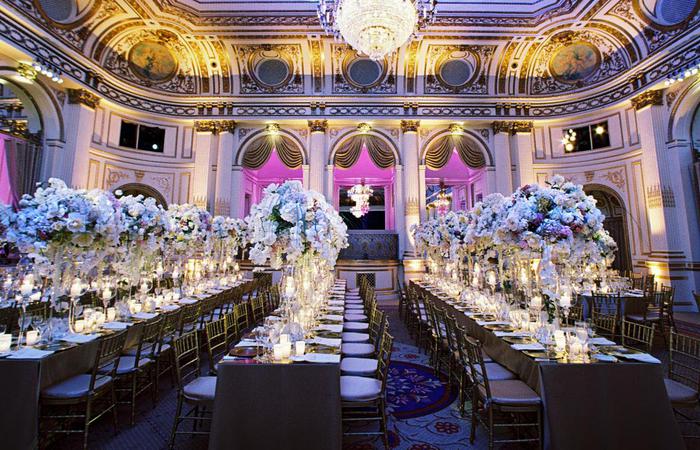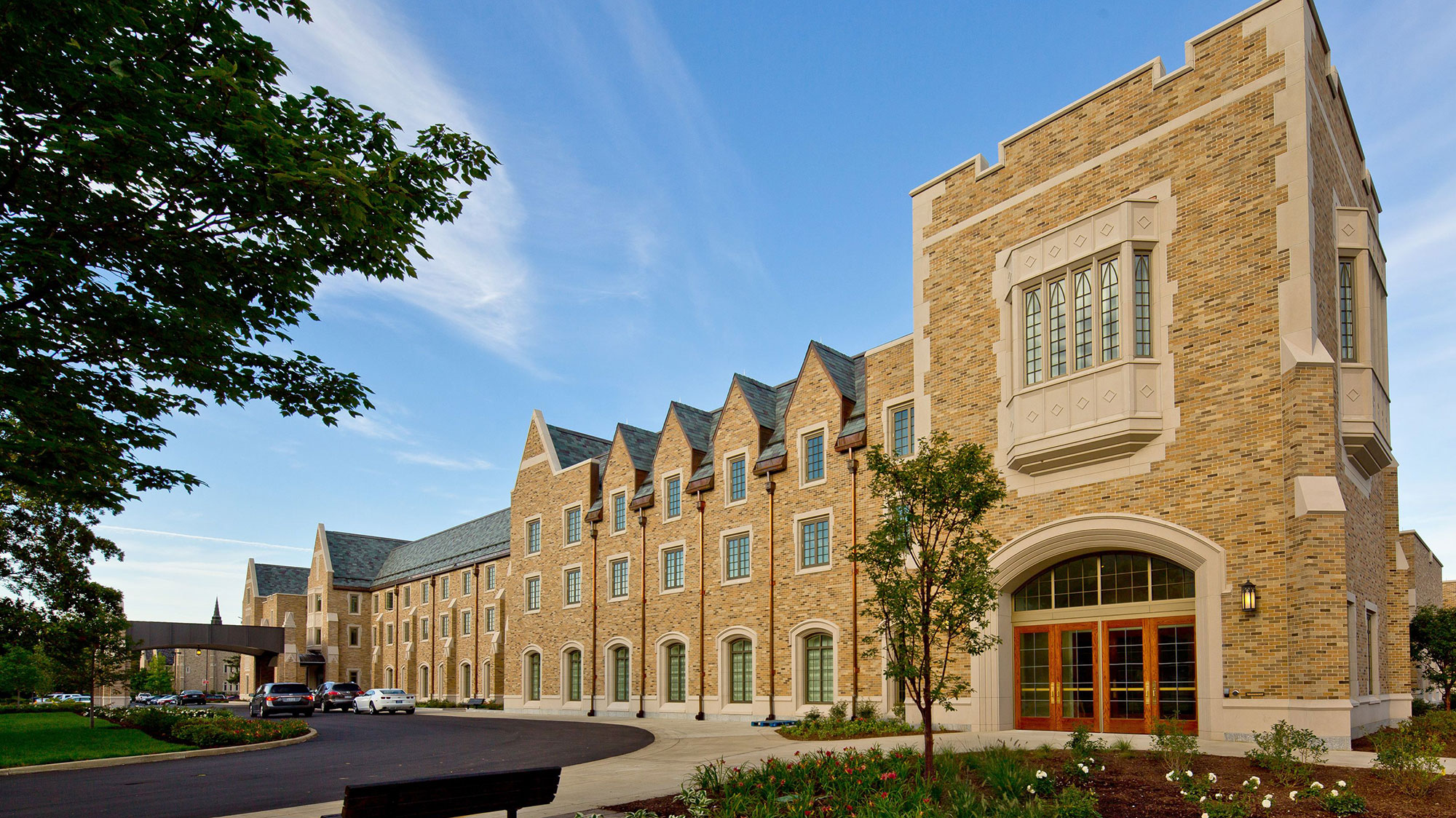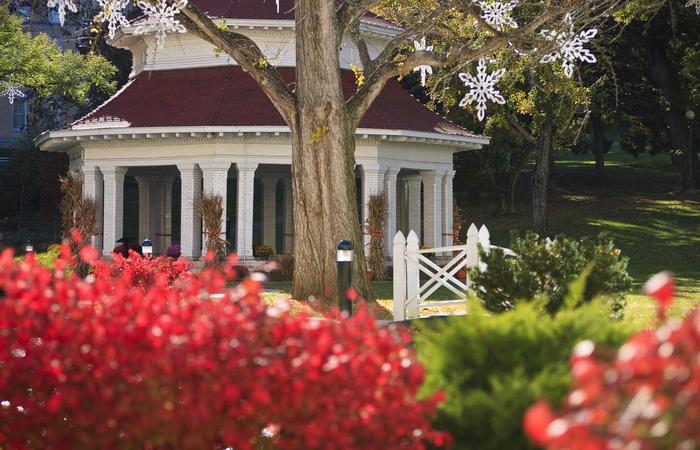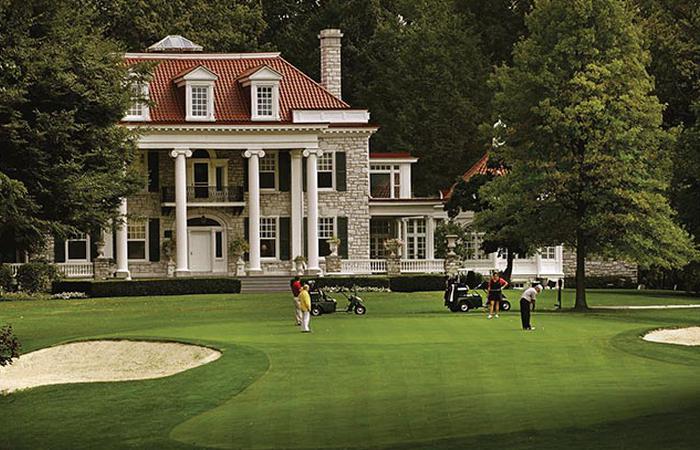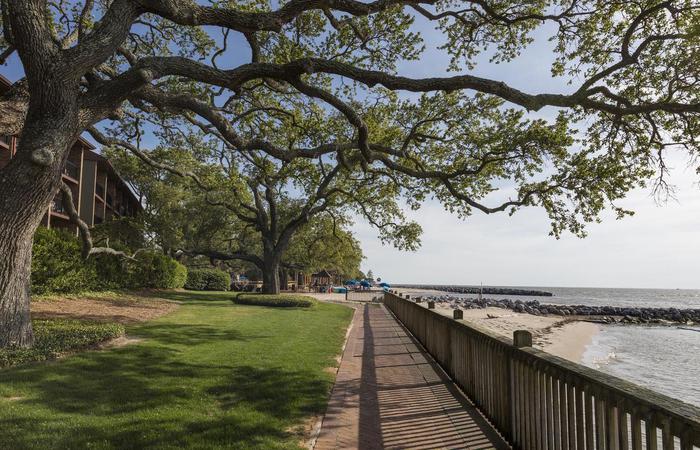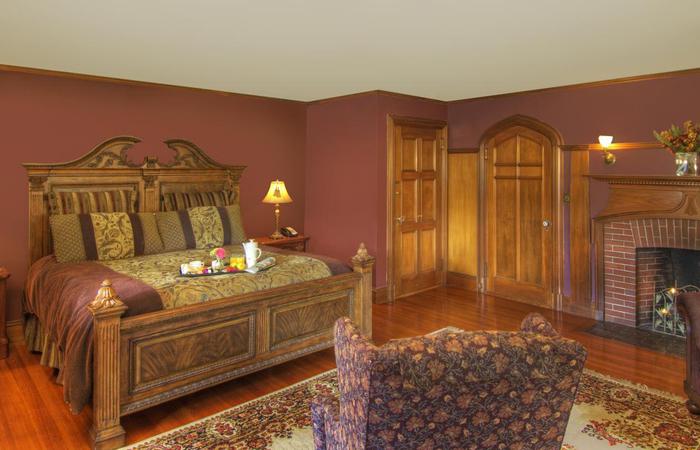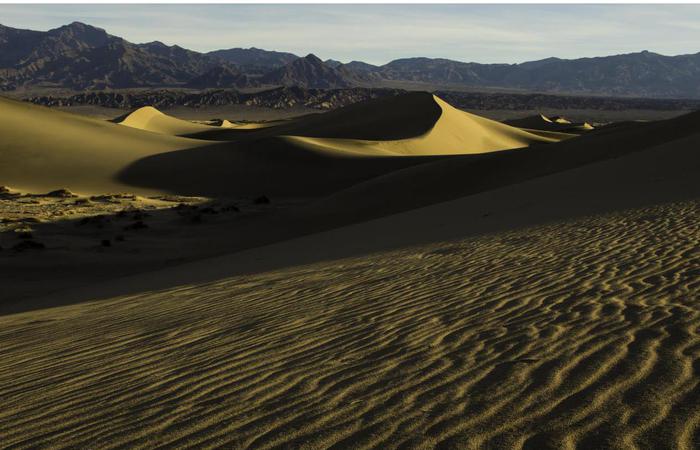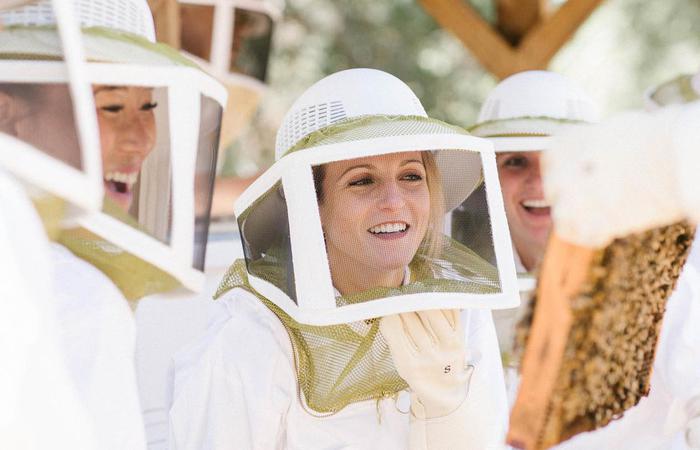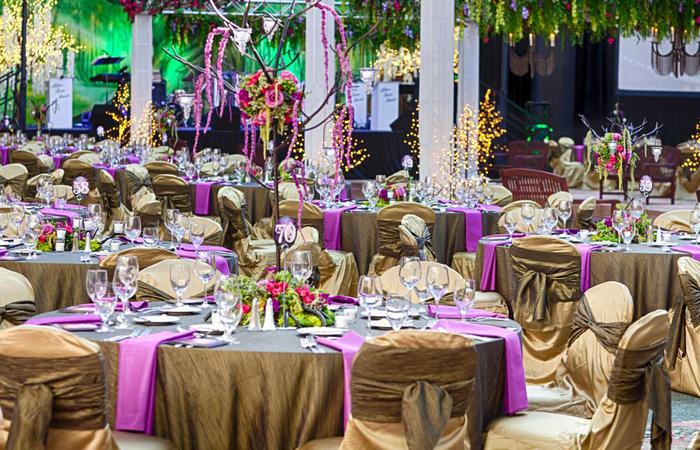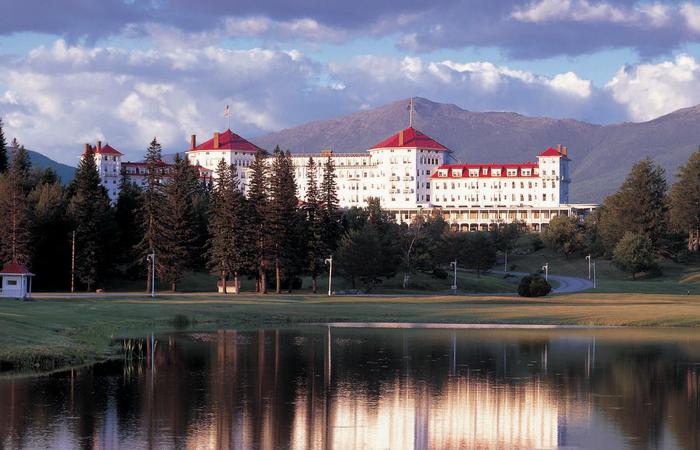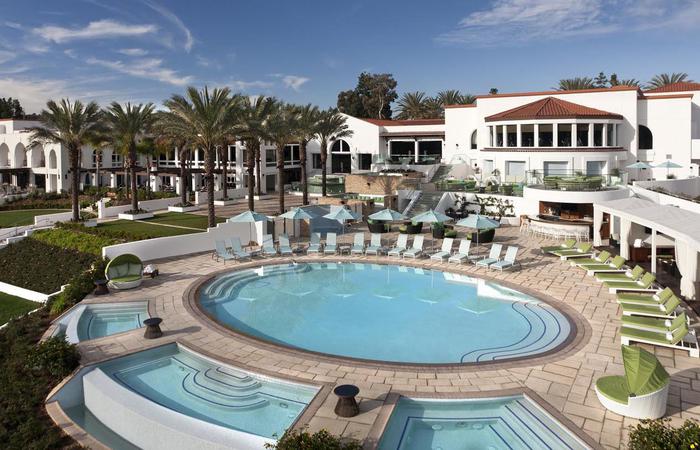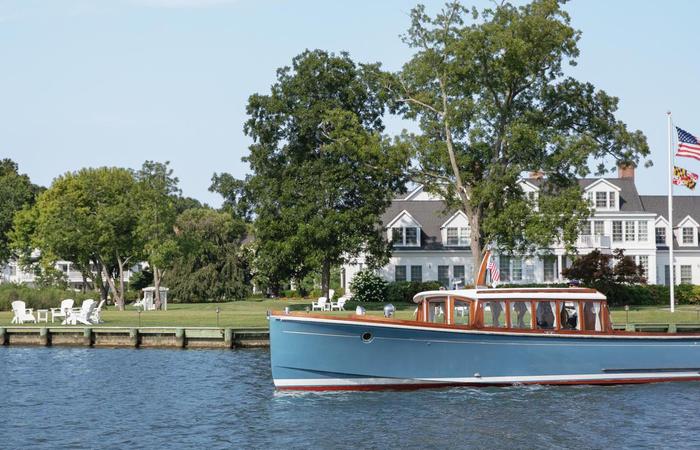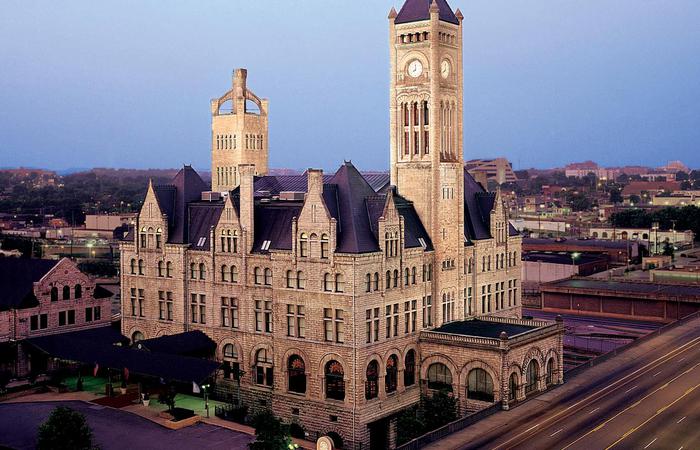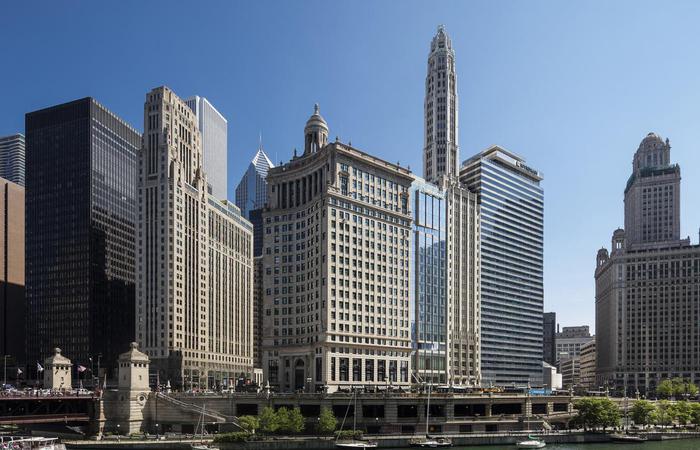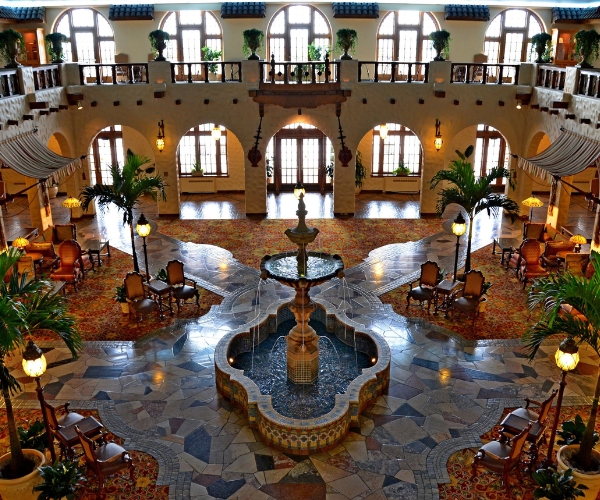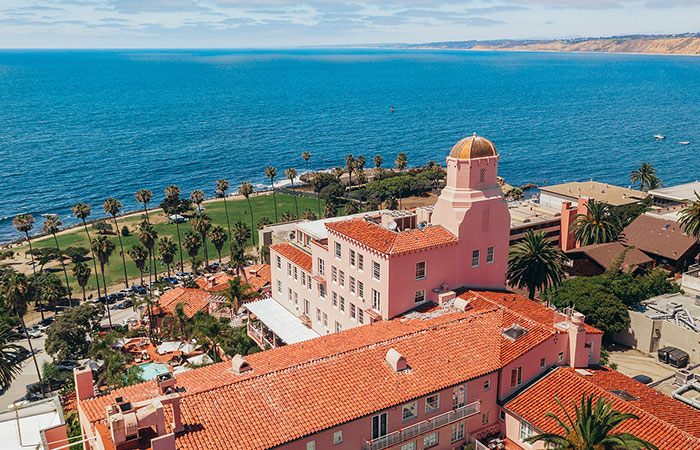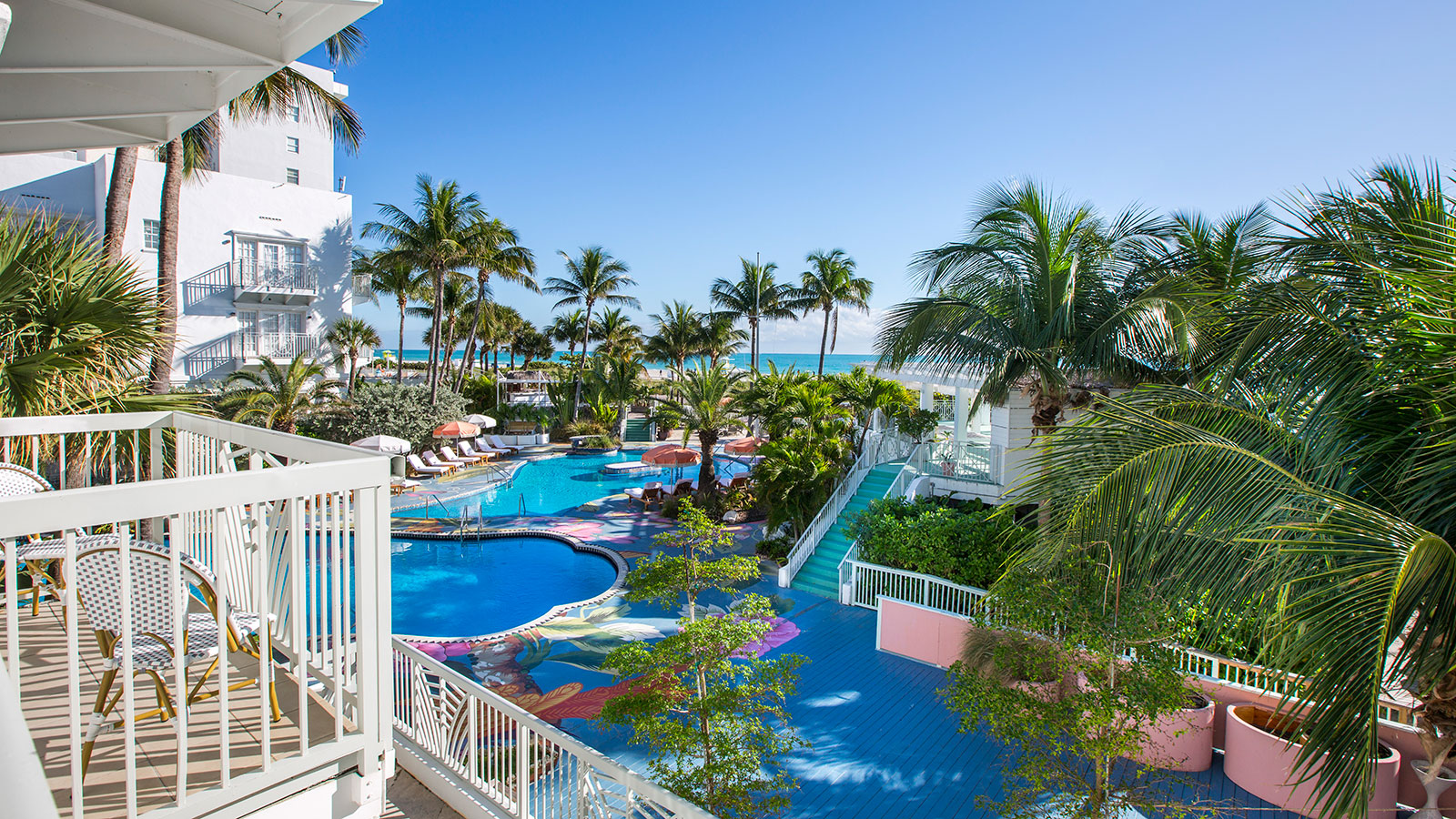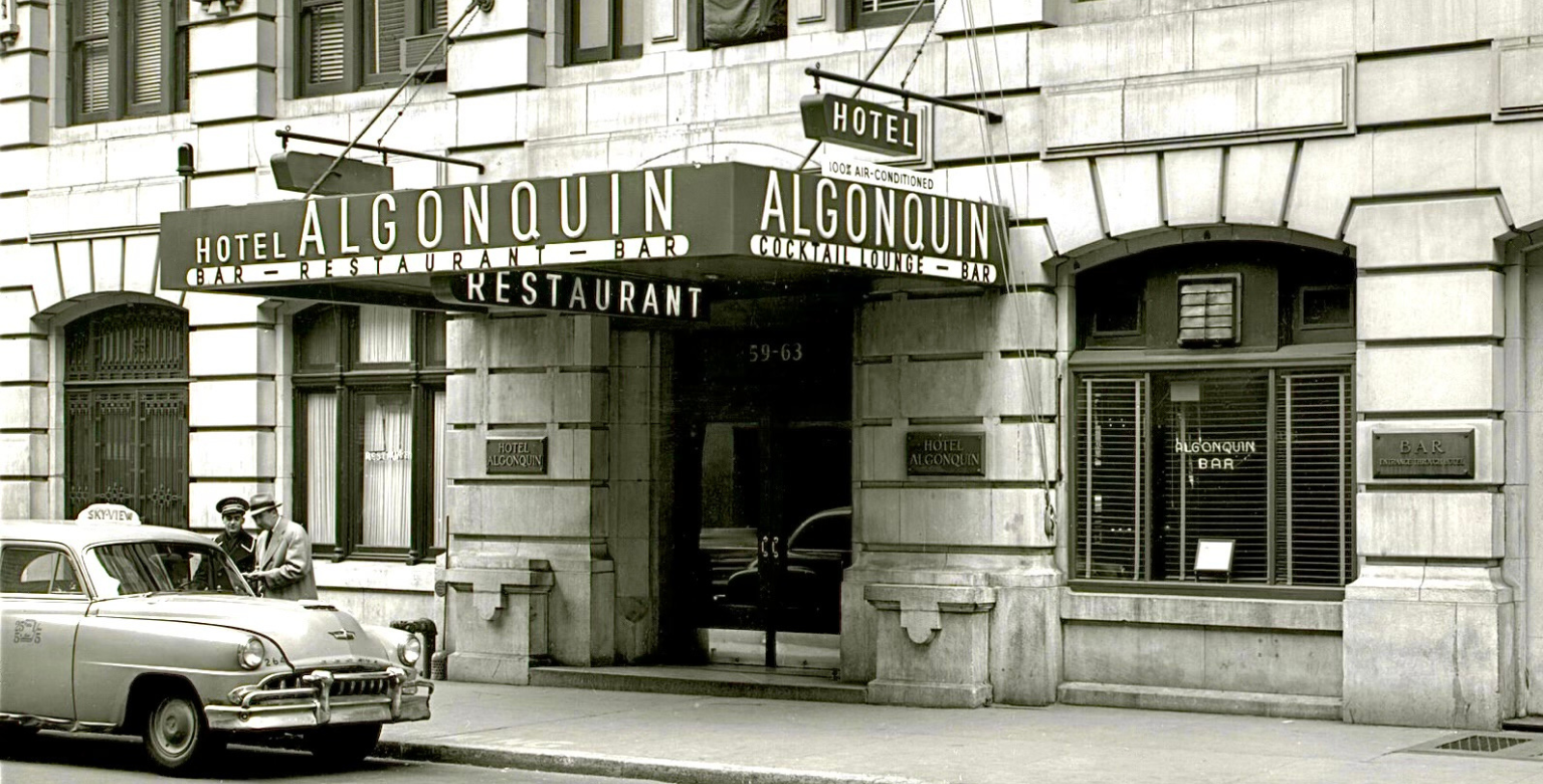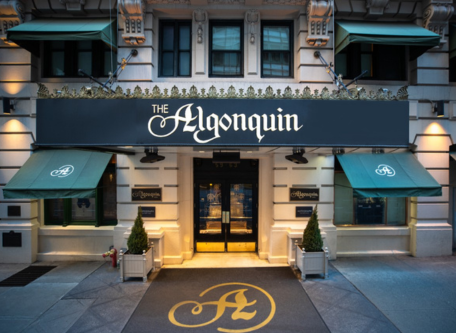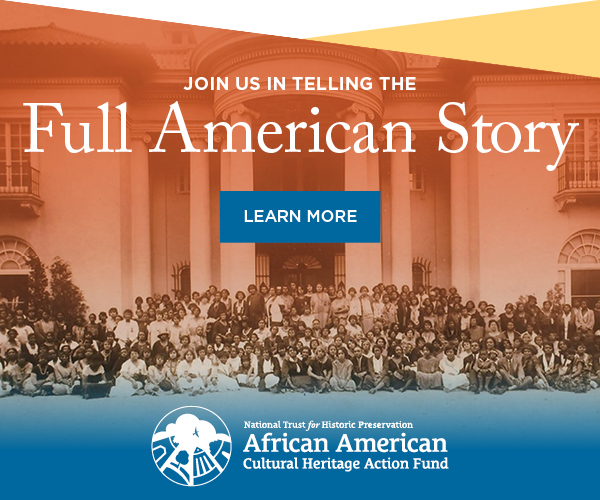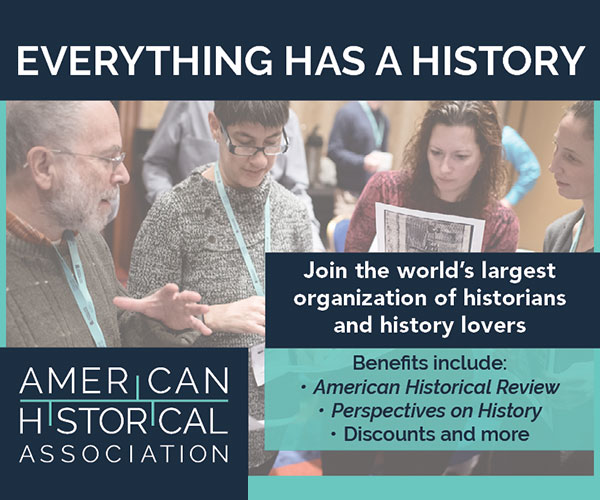Receive for Free - Discover & Explore eNewsletter monthly with advance notice of special offers, packages, and insider savings from 10% - 30% off Best Available Rates at selected hotels.
history
Discover The Algonquin Hotel Times Square, Autograph Collection, which was once the home of the renowned literary group, the Algonquin Round Table.
The Algonquin Hotel Times Square, Autograph Collection, a member of Historic Hotels of America since 2023, dates back to 1901.
VIEW TIMELINEAt the start of the 20th century, Midtown Manhattan was rapidly emerging as one of New York City’s most upscale neighborhoods. Nowhere was the transformation more apparent than the city blocks near Bryant Park around Sixth and Fifth Avenue, which had become home to extravagant restaurants, concert halls, and social clubs. Recognizing the area’s mounting economic potential, the officers of the Puritan Realty Company decided to construct a magnificent hotel along West 44th Street. To make their dream a reality, the company, in turn, hired the talented architect Goldwin Starrett to oversee the project’s completion. Construction on the building itself began in 1902 and lasted for several months. During that time, Starrett crafted a 12-story, “H-shaped” structure that showcased a stunning blend of Beaux-Arts and Renaissance Revival aesthetics. Beautiful, rusticated limestone constituted the first two levels, while fine red brick formed the façade for the remaining sections. Intricate details—like dentils and console brackets—proliferated across every story, as did deep bay windows that had their own rich features, such as panels, urns, and floral motifs. In fact, the windows were quite the design marvel, containing angular frames that enhanced the flow of natural sunlight into each of the hotel’s guestrooms. Starrett’s masterful work continued inside as well, with the Pergola restaurant best epitomizing his vision.
Located next to the lobby, the space possessed lavish wood-paneled columns, terra cotta wall carvings, and acorn-shaped light fixtures. Even the guestrooms had their own distinctive architectural flair, including the hotel’s two dozen suites. Built with waxed oak floors and mahogany woodwork, the suites were spacious enough to offer multiple bedrooms and parlors. When construction on the hotel finally concluded later that year, it quickly became one of the most popular social gathering spots in all of Manhattan. The hotel’s meteoric rise was largely thanks to the skills of general manager Frank Case, who had invested himself fully into guaranteeing its operations always met the highest standards. (One of his most noteworthy decisions involved allowing women to stay on-site unattended, which was a first for any prominent hotels in the city.) Case was even responsible for giving the building its name, “The Algonquin Hotel,” arguing that the intended title—the “Puritan”—was too inhospitable in character. Case’s dedication proved successful, as The Algonquin Hotel had risen to become one of New York City’s preeminent destinations in the years following World War I. Indeed, countless luminaries from across the country had started to appear on-site regularly, such as famed actors Douglas Fairbanks, Mary Pickford, and members of the Barrymore family.
However, the Pergola also attracted its own illustrious clientele, including Broadway impresario Florenz Ziegfeld Jr. and influential businessman Diamond Jim Brady. Its venerable reputation only continued to grow, especially once Case debuted the Blue Bar and Oak Room within the dining space after Prohibition. The Oak Room was soon the site of thrilling nightly performances headlined by such renowned acts as Julie Wilson, Steve Ross, and Mary Cleere Haran. Interestingly, the hotel had also developed a close connection to America’s professional literary field, given its proximity to The Hippodrome and other fantastic theaters. Some of the earliest guests to visit the building were novelists, journalists, and playwrights like Sinclair Lewis, Gertrude Stein, Maya Angelou, and Lady Gregory. A few of those intellectuals even founded their own projects inside the hotel, too. Perhaps the most noteworthy literary event to transpire at The Algonquin Hotel was the creation of the Algonquin Round Table.
Starting in 1919, several prominent writers began meeting at the hotel’s restaurant to collaborate on their publications. (This initial group included Franklin P. Adams, Robert Benchley, Heywood Broun, Marc Connelly, George S. Kaufman, Dorothy Parker, Harold Ross, Robert Sherwood, John Peter Tooley, and Alexander Woollcott.) Although they referred to themselves as the “Vicious Circle,” many of their colleagues took to calling them affectionately as the “Algonquin Round Table” due to where they sat in the Pergola. They subsequently met for lunch inside a portion of the restaurant known as the “Rose Room,” often creating a series of witticisms that were widely publicized across the country. But the discussions also helped galvanize the careers of a few of the members, such as Robert Benchley, whose time with the Algonquin Round Table got him to Hollywood. Harold Ross even used the collective to jumpstart the now-revered publication The New Yorker in 1925. The Algonquin Round Table was thus mourned considerably when it disbanded at the beginning of the Great Depression. Despite the dissolution of the Algonquin Round Table, The Algonquin Hotel nonetheless continued to experience great success.
Frank Case remained central to this prosperity and rose to become the hotel’s sole owner. Unfortunately for the hotel, though, Case’s storied time as steward eventually came to an end upon his death in 1946. Facing an uncertain future, The Algonquin Hotel was then purchased by Ben and Mary Bodne just a few months later. The Bodnes, in particular, were longtime fans of the location, having first visited decades ago while celebrating their honeymoon. Upon learning of the building’s sale, the couple did everything within their power to ensure that they would become the new owners. They then endeavored to uphold the legacy that Case had established, immediately investing thousands of dollars to thoroughly renovate the structure upon acquiring the site. The dedication that the Bodnes showcased paid off tremendously, as The Algonquin Hotel remained a posh destination for those interested in visiting downtown Manhattan throughout the mid-20th century. High-profile figures such as Laurence Olivier, Audrey Hepburn, Vivien Leigh, and Peter Ustinov also continued to arrive in great numbers. Frederick Loewe and Alan Jay Lerner even composed the score for their renowned Broadway musical, My Fair Lady, in one of the hotel’s suites. The Bodnes had also managed to preserve the hotel’s close ties to the literary community, hosting such prominent intellectuals as Tennessee Williams, Noël Coward, and William Faulkner.
However, after several decades of management, the Bodne family ultimately decided to sell their beloved hotel to new investors during the 1980s. What then ensued was an era of fluid ownership that eventually concluded once the current owners, Cornerstone Real Estate Advisors, acquired the site in 2011. Now known as “The Algonquin Hotel Times Square, Autograph Collection” today, Cornerstone Real Estate Advisors has since striven to maintain the hotel’s reputation as the most historic continuously operating hotel in New York City. This commitment is best epitomized by the company’s decision to renovate the structure with the help of renowned firm Stonehill Taylor. Together, the two have combined design elements of the Roaring Twenties with richly textured furniture, velvet drapery, theatrical lighting, and historical art pieces throughout the building. They even installed a fantastic custom piece of 3D art behind the lobby’s front desk, which showcases the pages of books that once belonged to past guests.
-
About the Location +
The Algonquin Hotel Times Square, Autograph Collection, resides in the heart of Midtown Manhattan, one of New York City’s most famous areas. Home to renowned landmarks like Central Park, Times Square, and Carnegie Hall, the locale is the central portion of the greater borough of Manhattan. Often described today as the cultural capital of the world, Manhattan’s origins are quite humble. The Lenape Native Americans had long inhabited the region for centuries, referring to it as “manaháhtaan,” or “the place for gathering wood to make bows.” But in 1609, Henry Hudson—an English explorer working on behalf of the Dutch East India Company—became the first European to chart Manhattan’s coastline (which was also an island). The Dutch had hoped Hudson could locate the mythical “Northwest Passage,” a maritime route that was believed to cut through the North American landmass straight to Asia. Despite Hudson’s failure ito locate the elusive body of water, the Dutch nonetheless used his findings to establish a colony in 1625. Building a citadel called “Fort Amsterdam” at the southernmost tip of Manhattan, the Dutch eventually used the island to serve as the economic hub for their settlement of New Amsterdam. (According to one merchant, Pieter Janszoon Schagen, the first colonists to arrive apparently paid the Lenape for the island in exchange for a fixed sum of Dutch guilders.) New Amsterdam then quickly emerged as an important hub for trade between the Caribbean, Europe, and several other North American colonies.
It remained under Dutch authority for the next four decades until the English managed to wrestle control away during the Second Anglo-Dutch War of the 1660s. Besides a brief moment in which the Dutch recaptured Manhattan, the island continued to serve as the center of the English Province of New York for decades. As such, the community on Manhattan Island was renamed “New York City.” Manhattan and the surrounding communities near New York Harbor steadily grew as a prosperous seaport under English rule. It became a focus for development in the “New World,” with both Columbia University and The King’s College being founded during the period. The area continued to play an essential role in New York, especially during the American Revolution. The island became a hotbed for patriotic sentiment, with the Sons of Liberty organizing in the city to protest British efforts on taxation without representation. Dozens of revolutionaries even met in Manhattan to hold a Stamp Act Congress, which constituted the first formal effort by Americans to resist the colonial authorities. Its socioeconomic significance also made it an early military target of the United Kingdom when fighting finally broke out between the two sides in the mid-1770s. In fact, the British attempted to seize it during the New York Campaign. George Washington and the Continental Army were unfortunately forced to abandon Manhattan and its bustling port at the climax of the campaign, which transpired with the defeats at the Battle of Fort Washington and the Battle of Long Island.
Manhattan remained occupied by the British for the remainder of the war, functioning as the main headquarters for its various military expeditions active throughout the colonies. Once the fighting had stopped in the early 1780s, the region became the fifth national capital for the infant United States of America under the Articles of Confederation. Delegates to the Continental Congress subsequently met at New York City Hall in Lower Manhattan, which at the time was located inside a local business called “Fraunces Tavern.” Manhattan remained the capital of the nation when the U.S. Constitution was enacted in 1789, gathering inside the now famous “Federal Hall.” Federal Hall specifically served as the site where the federalized U.S. Congress and the U.S. Supreme Court met, as well as the place where both the Bill of Rights and Northwest Ordinances were ratified! Even though Manhattan ceased serving as the nation’s capital a year later, it remained a vibrant economic center well into the 19th century. Thanks to the financial policies of Alexander Hamilton (who also called New York City his home) and the development of the Erie Canal, New York City emerged as the main port for any goods heading toward either Canada or the American Midwest. The New York Stock Exchange on Wall Street matured greatly as a result, evolving into one of the nation’s leading financial institutions. Its population exploded, surpassing Philadelphia in both size and prosperity. Its wealth of economic opportunities made it a desirable destination for all kinds of immigrants, beginning first with German and Irish people and later Southern and Eastern Europeans.
Manhattan thus became densely populated toward the end of the century, with hundreds of tenement houses lining most of its local neighborhoods. However, the presence of so many immigrant families in Manhattan led to the development of numerous ethnic enclaves—like Little Italy—as well as the perception that the island was a beckon for those wishing to gain a better life in the United States. (This vision even inspired the French to donate the Statue of Liberty to America in 1886.) Manhattan continued to attract waves of migrant peoples into the 20th century as well, namely, African Americans who relocated to the area as part of the Great Migration of the 1920s. This led to the birth of the celebrated Harlem Renaissance, which was an intellectual movement that saw the cultural revival of African American art and literature in the United States. Although it was concentrated in the Manhattan neighborhood of Harlem, its influence was so great that it affected black artists, musicians, and writers across the globe. With millions of people living in Manhattan by the late 1890s, city officials decided to unite the nearby communities in Brooklyn, Queens, Westchester, and Richmond counties to form the “City of Greater New York.” However, the island became the site for another equally important historical development—industrialization. Around the same time modern New York City emerged, many capitalists and entrepreneurs began financing massive factories and skyscrapers all over Manhattan.
The island’s skyline transformed significantly during the first few decades of the 20th century, with such famous landmarks—including the Chrysler Building, Grand Central Terminal, and 30 Rockefeller Plaza—opening within that span of time. But its most iconic feature was the Art Deco-inspired Empire State Building. Manhattan also saw the creation of many luxurious storefronts, restaurants, and art galleries, which started attracting tourists from across the country. Some of the most opulent buildings to debut were the theaters and concert halls along Broadway, one of Manhattan’s major thoroughfares. Soon known as the “Theatre District,” sections of Broadway quickly became synonymous with nightlife in the city. By the end of the 20th century, Manhattan and the rest of New York City had firmly established themselves as the most influential urban center in the whole United States. Manhattan has since maintained its prestigious status as a national cultural destination. Indeed, the area serves as home to many fantastic upscale apartment complexes and townhouses in such renowned neighborhoods as SoHo, the Upper West Side, the Upper East Side, and Greenwich Village (which is also the site of the modern LGBT rights movement in America). Many prominent corporations, such as JP Morgan Chase, Bloomberg L.P., Deloitte, MetLife, and Viacom, are headquartered in the borough. Four of the nation’s biggest television networks—ABC, CBS, FOX, and NBC—are also based in Manhattan, as well. Some of the best vendors have stores on Fifth Avenue, too, making it a shopping paradise. Even the headquarters for the United Nations is based in Manhattan. Few other places can claim to have such a heritage than Manhattan or New York City.
-
About the Architecture +
Renaissance Revival architecture—sometimes referred to as “Neo-Renaissance”—is a group of architectural revival styles that date back to the 19th century. Neither Grecian nor Gothic in their appearance, Renaissance Revival-style architecture drew inspiration from a wide range of structural motifs found throughout Early Modern Western Europe. Architects in France and Italy were the first to embrace the artistic movement, who saw the architectural forms of the European Renaissance as an opportunity to reinvigorate a sense of civic pride throughout their communities. As such, those intellectuals incorporated the colonnades and low-pitched roofs of Renaissance-era buildings with the characteristics of Mannerist and Baroque-themed architecture. Perhaps the most significant structural component of a Renaissance Revival-style building involved the installation of a grand staircase in a vein similar to those located at both the Château de Blois and the Château de Chambord in France’s Loire Valley. This particular feature served as a central focal point for the design, often directing guests to a magnificent lobby or exterior courtyard. However, the nebulous nature of Renaissance Revival architecture meant that its appearance varied widely across Europe. Historians today sometimes find it challenging to provide a specific definition for the architectural movement. Regardless, Renaissance Revival architecture today remains one of the world’s most enduring, appearing in countless places across the globe.
Beaux-Arts architecture itself is one of the most commonly seen architectural styles in the United States despite its European origins. Widely popular around the dawn of the 20th century, this beautiful architectural form originally began at an art school in Paris known as the École des Beaux-Arts during the 1830s. There was much resistance to the Neoclassism of the day among French artists, who yearned for the intellectual freedom to pursue less rigid design aesthetics. Four instructors in particular were responsible for establishing the movement: Joseph-Louis Duc, Félix Duban, Henri Labrouste, and Léon Vaudoyer. The training that these instructors created involved fusing architectural elements from several earlier styles, including Imperial Roman, Italian Renaissance, and Baroque. As such, a typical building created with Beaux-Arts-inspired designs would feature a rusticated first story followed by more simplistic ones. A flat roof would then top the structure. Symmetry became the defining character, with every building’s layout featuring such elements as balustrades, pilasters, and cartouches. Sculptures and other carvings were commonplace throughout the design, too. Beaux-Arts only found a receptive audience in France and the United States, though, as most other Western architects at the time gravitated toward British design principles. Nevertheless, the architectural style came to define the appearance of numerous buildings throughout America, with many surviving well into the 21st century as cherished historical landmarks.
-
Famous Historic Events +
Algonquin Round Table (1919): Fewer literary gatherings have affected the history of the United States as much as the Algonquin Round Table. Founded in the wake of World War I, the informal group of writers, actors, and critics crafted an extensive offering of influential writing that would grace American households for a decade. Interestingly, the Algonquin Round Table started as a practical joke despite its now-legendary status. In 1919, publicist John Peter Toohey had invited colleague Alexader Woollcott to lunch inside The Algonquin Hotel’s Pergola restaurant. Toohey had publicly stated the lunch was to welcome Woollcott back from the conflict, where he had covered the fighting as a war correspondent. The ambitious publicist went to great lengths to arrange the meeting as well, inviting their mutual friends to join them. But in reality, Toohey wanted to use the lunch to poke fun at Woollcott for the latter’s refusal to support the work of one of his clients, Eugene O’Neill. Woollcott was incredibly amused by the ruse, particularly the banter shared among all those in attendance. Finding the entire event to be a great success, Toohey, Woollcott, and their contemporaries proceeded to meet again practically every week for the next decade. Although there is no historical record of what was specifically said at the first luncheon, the conversations during all the other successive ones stemmed around trading wisecracks and witticisms about their literary work. Those humorous interactions, in turn, translated into popular literary columns that numerous Americans yearned to read throughout the Roaring Twenties.
The group’s immense popularity gave rise to its collective identity as the “Algonquin Round Table,” although its members referred to themselves as “The Vicious Circle.” The size of the group expanded exponentially, for it gradually attracted the brightest creative minds in New York City, like Noël Coward, Tallulah Bankard, Harpo Marx, Dorothy Parker, Edna Ferber, Herman J. Mankiewicz, Donald Ogden Stewart, Alice Duer Miller, Harold Ross, and George S. Kauffman. Guests visiting the Pergola would often see the members of the Algonquin Round Table huddled together within the space, trading jokes amid games of poker or charades. But the meetings also spawned moments of collaboration, too, with small pairings of members crafting specific prose together. For instance, Harold Ross used those collaborations to inspire him to establish The New Yorker magazine in 1925! In fact, several members even pooled their own resources to open a revue for one night called No Sirree!, which contained a wealth of unique theatrical performances. The show proved to be such a success that it eventually helped one member, Robert Benchley, get high-profile work in Hollywood. Unfortunately for the group, the Algonquin Round Table began to drift apart when its various members began relocating away from New York City before disbanding entirely by the 1930s. Nevertheless, many people would cherish the legacy left behind by the Algonquin Round Table, citing the important exposure it provided for its esteemed members. Perhaps the greatest symbol of this everlasting appreciation was the decision of the New York City Landmarks Preservation Commission to make The Algonquin Hotel Times Square, Autograph Collection an official New York City Landmark in 1987.
-
Famous Historic Guests +
Alan Jay Lerner, a lyricist and librettist who ultimately won three Tony Awards and Academy Awards, respectively
Alexander Woollcott, an actor, author, and critic known for co-founding the Algonquin Round Table
Angela Lansbury, an actress known for her roles in movies like The Manchurian Candidate, Gaslight, and The Picture of Dorian Gray
Arthur Miller, a playwright known for such productions as All My Sons, The Crucible, and Death of a Salesman
Audrey Hepburn, an actress known for her roles in movies like Breakfast at Tiffany's, Charade, and Roman Holiday.
Barnaby Conrad, an artist, author, athlete and nightclub owner known for his novel Matador
Beatrice Lillie, an actress best remembered for her Tony Award-winning revue, An Evening with Beatrice Lillie
Brendan Behan, a playwright and author best remembered for his autobiographical novel Borstal Boy
Charles Chaplin Jr., an actor known for such films as The Beat Generation and Fangs of the Wild
Christopher Plummer, an actor known for his roles in movies like Beginners, The Insiders, and The Sound of Music
Dana Andrews, an actor best known for his roles in Laura and The Best Years of Our Lives
Diamond Jim Brady, a gangster active at the height of America’s Gilded Age
Dorothy Parker, a critic, poet, and short story writer who co-founded the Algonquin Round Table
Douglas Fairbanks, an actor known for his roles in The Thief of Baghdad, Robin Hood, and The Mark of Zorro
DuBose Hayward, an author best remembered for his novel Porgy
Eddie Cantor, a singer known for such songs like “Makin’ Whoopie,” “If You Knew Susie,” and “Merrily We Roll Along”
Edna Ferber, an author known for such novels as So Big, Show Boat, Cimarron, and Giant
Elia Kazan, a director known for such films as Gentleman’s Agreement and A Streetcar Named Desire
Elsie Janis, an actress best remembered as the “sweetheart of the American Expeditionary Force” during World War I
Ella Fitzgerald, a singer known for her songs “Dream a Little Dream,” “A-Tisket, A-Tasket,” and “It Don’t Mean a Thing (If It Ain’t Got That Swing)”
Elsa Lanchester, an actress known for her roles in films like Come to the Stable, Witness for the Prosecution, and Bride of Frankenstein
Éric Rohmer, a director known for such films as My Night at Maud’s, Clarie’s Kiss, and The Green Ray
Ethel Barrymore, an actress regarded by many to be “The First Lady of American Theatre”
Eugène Ionesco, a playwright best remembered for the production The Bald Soprano
Fannie Hurst, a writer known for such novels as Back Street, Four Daughters, and Imitation of Life
Fanny Brice, a comedian best remembered for her radio comedy The Baby Snooks Show
Florenz Ziegfeld Jr., a Broadway impresario remembered for his theatrical revues, the Ziegfeld Follies
François Truffaut, a director known for such films as The 400 Blows, Day for Night, and Shoot the Piano Player
Frank Sullivan, a humorist best remembered for creating the character “Mr. Arbuthnot the Cliche Expert”
Franklin P. Adams, a columnist known for his weekly newspaper piece, “The Conning Tower”
Fred Thompson, a librettist known for such productions as To-night’s the Night, The Bing Boys Are Here, and Rio Rita
Frederick Loewe, a composer who helped create Broadway musicals like Brigadoon, My Fair Lady, and Camelot
George Bernard Shaw, a playwright known for works such as Man and Superman, Pygmalion, and Saint Joan
George Gershwin, a composer and pianist known for such songs as Rhapsody in Blue and An American in Paris
George S. Kaufman, a playwright known for such shows as Of Thee I Sing, You Can’t Take It with You, and Guys and Dolls
Gertrude Stein, an author known for such works as Three Lives and The Making of Americans
H.L. Mencken, a writer and scholar who created a multivolume study of the English language in the U.S. called The American Language
Harold Ross, a journalist who founded the prominent magazine The New Yorker
Harpo Marx, an actor and comedian who formed the famous comedy act, the Marx Brothers
Helen Hayes, an actress remembered in history as the “First Lady of American Theatre”
Henrik Willen van Loon, an author best remembered for the children’s book The Story of Mankind
Irvin S. Cobb, a humorist known for his work writing for Joseph Pulitzer’s New York World
Irving Berlin, a composer and lyricist whose work largely constitutes the Great American Songbook
Isabella Augusta, a dramatist known as “Lady Gregory,” who helped foment the Irish Literary Revival
Jack Paar, an actor, comedian, and writer, who is best remembered for hosting The Tonight Show
James Thurber, a cartoonist whose influential illustrations appeared regularly in The New Yorker
Jean-Luc Godard, a director known for such films as Breathless, Contempt, and Band of Outsiders
Joan Plowright, an actress known for starring in plays like A Taste of Honey, Saint Joan, and Saturday, Sunday, Monday
John Barrymore, an actor known for his roles in such films as Grand Hotel, Twentieth Century, and Midnight
John Cheever, an author known for novels like Bullet Park, Falconer, and The Wapshot series
John Drew Jr., a stage actor remembered for his roles in Shakespearean comedies
John Gielgud, an actor who became celebrated for his Shakespearean acting on Broadway and the West End
John Hersey, a journalist best remembered for his account of the atomic bomb dropping on Hiroshima, Japan, during World War II
John Peter Toohey, a writer and publicist known for co-founding the Algonquin Round Table
Jules Romains, a novelist best remembered as the founder of the Unanimism literary movement
Laurence Olivier, an actor known for his roles in the film adaptations of Hamlet, Henry V, and Richard III
Leslie Caron, an actress known her roles in such films as Gigi, Fanny, and The L-Shaped Room
Louis Bromfield, an author and conservationist best remembered for his novel Early Autumn
Louis Malle, a director known for such films as The Lovers, Pretty Baby, and Lacombe, Lucien
Louis Untermeyer, a poet and editor best remembered for his work as Consultant in Poetry to the Library of Congress
Mary Chase, a journalist and playwright best remembered for her Broadway play Harvey
Mary Pickford, an actress known for her role in the silent film Coquette
Mary Quant, a fashion designer credited with influencing the British Mod movement throughout the 1960s
Maya Angelou, a civil rights activist and poet known for such works as I Know Why the Caged Bird Sings
Noël Coward, a playwright known for such works as Hay Fever and Private Lives
Norman Mailer, an author best known for his novels The Naked and the Dead, Armies of the Night, and The Executioner’s Song
Preston Sturges, a playwright and director known for adapting the screwball comedy format for his Hollywood movies
Raymond Hitchcock, an actor best remembered for his work on Broadway at the height of the Gilded Age
Rex Beach, an Olympic athlete and novelist known for his books The Spoilers and The Silver Horde
Robert Benchley, a humorist who wrote many newspaper articles for Vanity Fair and The New Yorker while also filming the acclaimed short movie How to Sleep
Robert Nathan, a novelist and poet known for such books as The Bishop’s Wife, One More Spring, and Portrait of Jennie
Ruth Hale, an actress and playwright who co-wrote such plays as Melody Jones and Handcart Trails
Simon Gray, a playwright known for such shows as Butley, Otherwise Engaged, and Quartermaine’s Terms
Simone Signoret, an actress known for her roles in such films as La Ronde, Room at the Top, and Ship of Fools
Sinclair Lewis, an author best known for writing Babbitt, Main Street, and It Can’t Happen Here
Tallulah Bankhead, an actress best remembered for her role in Alfred Hitchcock’s film Lifeboat
Tennessee Williams, a playwright known for writing such productions as The Glass Menagerie, Cat on a Hot Tin Roof, and A Streetcar Named Desire
Tom Stoppard, a playwright known for such shows as Night and Day, The Invention of Love, and The Coast of Utopia
Tony Richardson, an actor and director best remembered for his work filming the movie Tom Jones
Tyrone Guthrie, a theatrical director known for his innovative approaches to both Shakespearean and modern drama
Vivien Leigh, an actress known for her roles in Gone with the Wind and A Streetcar Named Desire
Will Rogers, an actor known for his roles in such films as Judge Priest, In Old Kentucky, and Steamboat Round the Bend
William Faulkner, an author known for writing such works as As I Lay Dying, Sanctuary, and The Sound of Fury
William Inge, a playwright known for such shows as Picnic, Glory in the Flower, and The Dark at the Top of the Stairs
William Saroyan, a novelist and playwright known for writing such works as The Time of Your Life, The Daring Young Man on the Flying Trapeze, and The Human Comedy
Yuri Zavadsky, an actor and theater director known for his role as “Anthony” in the play The Miracle of St. Anthony
Yves Montand, an actor and singer known for his roles in such movies as Jean de Florette, Z, and The Wages of Fear
-
Film, TV, and Media Connections +
Play Ball (1925)
Citizen Kane (1941)
It’s a Wonderful Life (1946)
Giant (1956)
The Sound of Music (1965)
Rich and Famous (1981)
They All Laughed (1981)
American Masters: The Algonquin Round Table: The Ten-Year Lunch (1987)
Mrs. Parker and the Vicious Circle (1994)
The Sonnet Project: Sonnet #103 (2015)
-
Women in History +
Maya Angelou: Of the many luminaries to visit The Algonquin Hotel Times Square, Autograph Collection over the years, few are as distinguished as American poet, actress, and civil rights activist Maya Angelou. The author of seven autobiographies, three books of essays, and countless other forms of literature, Angelou’s spectacular career lasted for some 50 years. Many today consider her most critically acclaimed work to be I Know Why the Caged Bird Sings. The first in her seven-part autobiographical series, the book is a first-hand account of her childhood and adolescence. It is a classic “coming-of-age” story that demonstrates how the strength of the spirit can overcome the obstacles of trauma. Her evolution specifically illustrated her growth from a victim of racism to a strong woman capable of confronting prejudice. She went on to have a diverse career as a young adult, working in occupations ranging from being a nightclub dancer to serving as a fry cook. Angelo even spent time as a cast member for the operatic troupe of Porgy and Bess, where she further refined her talents as a performer.
But she soon found herself immersed in the Civil Rights Movement of the mid-20th century, acting as a coordinator for the Southern Christian Leadership Conference. Soon enough, Angelou was protesting alongside the likes of Malcolm X and Martin Luther King Jr. However, Angelou never stopped writing. She continued to create all kinds of literary productions, including a ten-part television series called Black, Blue, Black. Aired in 1968, it explored the influences of African culture on American society. Angelou also built a formidable reputation as an actress, receiving a Tony Award nomination for her performance in Look Away. In testimony to her great contributions to the arts, Maya Angelou earned countless accolades throughout her life. For instance, Wake Forest University made her a professor of its American Studies program during the early 1980s. She also was invited to be the first poet since Robert Frost to speak at a presidential inauguration, performing her poem “On the Pulse of Morning” in 1993. Her other honorary speaking engagements included commemorating the 50th Anniversary of the United Nations and elegizing the death of Nelson Mandela. Perhaps the greatest honor bestowed upon her was the Presidential Medal of Freedom, which she received shortly before her death in 2014.
-
Ghost Stories +
With a reputation for being a creative haven, The Algonquin Hotel Times Square, Autograph Collection has been a favorite haunt of some of America’s most influential writers, actors, directors, and musicians for decades. During its heyday in the Roaring 20s, the hotel was the place to see and be seen for movers and shakers of the country’s cultural scene. Its dining room notably served as the gathering place for the “Vicious Circle,” a who’s who of the era’s greatest literary and theatrical minds, during their daily Algonquin Round Table luncheons. However, the creative elite of the time did not just come for lunch. Many loved The Algonquin Hotel so much that they often moved in for a while, staying for months and even years at a time.
Given their fondness for the hotel, it is no wonder that a few former guests decided to stick around long after checking out. Guests and employees alike have reported experiencing all sorts of strange occurrences, from disembodied voices and footsteps to ghostly apparitions. One such guest reported hearing otherworldly elevator music, a rendition of “I’m in the Mood for Love,” which was penned by lyricist and Vicious Circle contemporary Dorothy Fields. Strangely, the other riders never heard a note of the spirited serenade.
Although the mysterious elevator artist may never be revealed, there is one ghostly guest whose identity is almost assured. Known for her sharp wit and cutting barbs at The Algonquin Round Table—as well as her contributions to the 1937 film A Star Is Born, The New Yorker, and more—famed member Dorothy Parker was a fixture at the hotel for years. Her presence can still be felt around The Algonquin Hotel today, with portraits of her and other Vicious Circle members hanging throughout. One such picture, a framed photograph, even flew off the wall when the hotel’s attic was under renovation. Still, it appears that Parker generally prefers peace and quiet in the afterlife, as unruly children have reportedly been shushed by the “mean woman” in the painting of the Algonquin Round Table, which hangs in the hotel’s restaurant.
Some say that Parker’s paranormal antics were a supernatural cry for help. Along with being a staple of the country’s cultural landscape, Parker was also an avid advocate for social justice movements. She even willed her assets to none other than Martin Luther King Jr., whom she greatly admired but had never actually met. Sadly, in a cruel twist of fate, the civil rights leader was assassinated only 10 months following Parker’s death, leading her assets to be transferred to the NAACP and her ashes to unceremoniously be placed in a filing cabinet in Baltimore, Maryland. There, they sat for almost two decades before being transferred to a modest memorial at the NAACP headquarters.
Yet, Parker had no connection to the city, and her soul was still restless. Fortunately, through the work of the Dorothy Parker Society, her ashes were disinterred and returned home to New York City, where she was finally laid to rest on August 22, 2022, the day which would have been her 127th birthday, alongside her parents and grandparents on August 22, 2020, at Woodlawn Cemetery in the Bronx. Since then, all reports of Parker haunting The Algonquin Hotel have ceased, leaving her memory to live on only in the artworks that bear her likeness.


